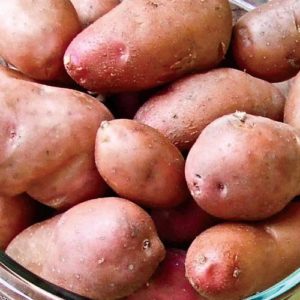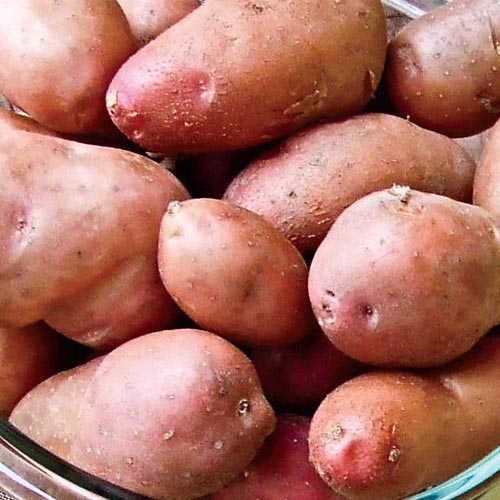 Growing up in the Midwest, I learned early on the value of the potato. No holiday was complete without several side dishes featuring potatoes. I remember when redskin potatoes first became readily available, then Yukon golds (how did we ever make mashed potatoes before yukons?). And just a few years ago I was delighted to find an array of small fingerling potatoes at my favorite market, so I could make a red, white, and blue potato salad (the blue was really purple). Two summers ago I decided to try my hand at growing potatoes because the little seed potatoes at the market looked so cute, and my grandma insisted they were easy to grow. And she was right- my kids loved harvesting the potatoes, and the novelty of walking outside and digging up some potatoes for dinner never wore off.
Growing up in the Midwest, I learned early on the value of the potato. No holiday was complete without several side dishes featuring potatoes. I remember when redskin potatoes first became readily available, then Yukon golds (how did we ever make mashed potatoes before yukons?). And just a few years ago I was delighted to find an array of small fingerling potatoes at my favorite market, so I could make a red, white, and blue potato salad (the blue was really purple). Two summers ago I decided to try my hand at growing potatoes because the little seed potatoes at the market looked so cute, and my grandma insisted they were easy to grow. And she was right- my kids loved harvesting the potatoes, and the novelty of walking outside and digging up some potatoes for dinner never wore off.
Planting and Harvesting
Potatoes prefer well drained, fine sandy soil, with a lot of organic matter mixed in. If your soil is less than potato ready, consider planting a cover crop the year before. Crop rotation is key with potatoes- yes, even in your own garden. To avoid issues such as scab disease, do not add too much manure to your seedbed, and also watch the soil pH: for potatoes, the pH should be 5.0 to 5.5. Once your plants are started, remember potatoes need constant moisture, so water regularly. Once your plants are about 6 inches tall, you need to hoe the dirt around the base of the plant in order to keep the root covered and support the plant. This helps keep the potato from getting sunburned- which makes them turn green and taste bitter. Hilling should happen every two weeks for proper potato protection. Two weeks after the vines have naturally died down, it’s time to dig up your potatoes. If your weather is still hot, immediately take harvested potatoes to a dark, cool place- any exposure to sun can cause your potatoes to turn green and they may rot. Potatoes can be stored for about 4 to 6 weeks; if you need to store them longer than that, they must be cured in a dark place (temperature between 60 and 65 degrees and a humidity of 85 percent or higher for 10 days); after they are cured they can be kept in a very cool (40 to 45 degrees) dark humid place for several months.
Interested in trying your hand at potato propagation? Gurney’s has a wide variety of potatoes for you to choose from. Have a favorite potato variety? Let us know in the comments!

